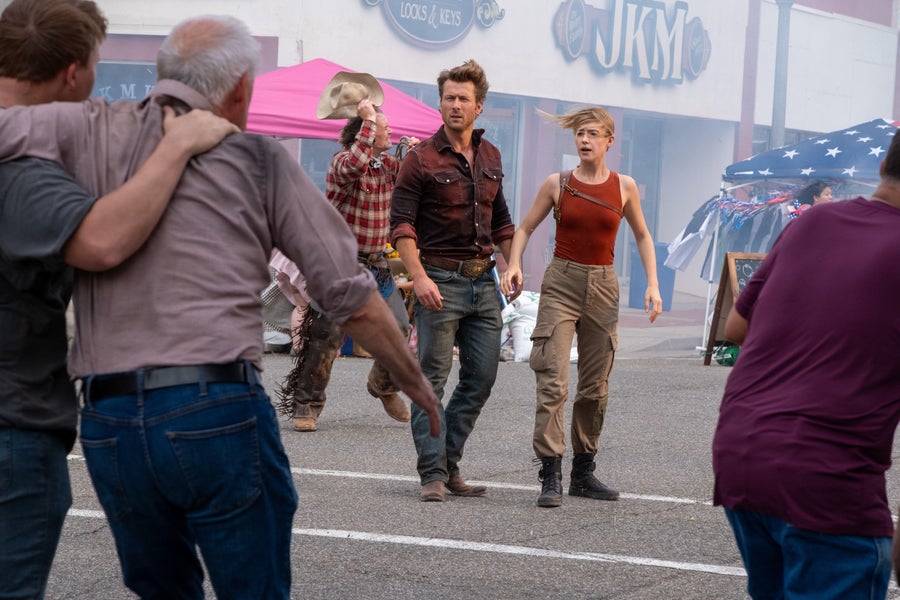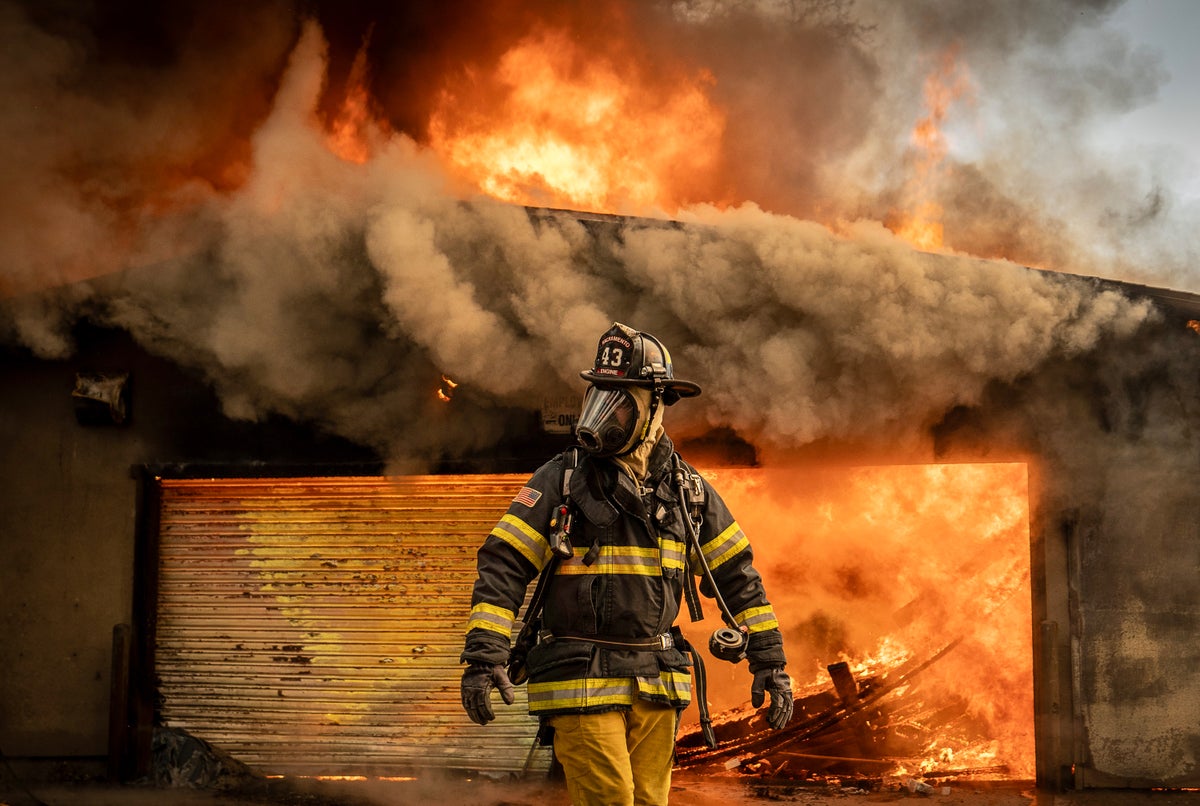If you grew up in the 1990s and have even a cursory interest in tornadoes, you’ve probably seen Twister. The disaster flick classic, set in the swirling chaos of a tornado outbreak in Oklahoma, captured the awesome power of severe weather—and the unwavering drive of storm-chasing scientists.
In taking on the challenge of creating a faithful sequel for modern audiences, the crew of the new film Twisters—a sequel to the original that will be in wide release on Friday—recruited Sean Waugh and his teammates at the National Severe Storm Laboratory (NSSL) to ensure an accurate portrayal of the chasing lifestyle. Waugh is a research scientist who often spends his workdays (and his free time) developing and deploying technology to study the terrifying beauty of tornadoes. Throughout the production of Twisters, he and his colleague Kevin Kelleher, an adviser for the original 1996 film and former deputy director of the NSSL, served as a touchstone for all aspects of the movie’s realism.
Scientific American spoke with Waugh—while he was out in his specialized storm-chasing truck—about his field experience and his work on Twisters.
On supporting science journalism
If you’re enjoying this article, consider supporting our award-winning journalism by subscribing. By purchasing a subscription you are helping to ensure the future of impactful stories about the discoveries and ideas shaping our world today.
[An edited transcript of the interview follows.]
What’s your personal connection to Twister or to severe weather?
When Twister got released, I was already interested in meteorology. My earliest memory was on my grandfather’s wheat farm in central Kansas. I remember him pacing back and forth in the living room, concerned because the weatherman on TV was talking about a big approaching hailstorm. The storm never hit, which is good, but then grandpa got all pissed because he stressed over nothing. He was using some colorful language and, at the advanced age of four years old, I stood up and said, “Grandpa, I’m going to grow up to be a weatherman—and I’m going to be right all the time.” He said, “Well, you’re going to be rich because you’re going to be the only one.” It just kind of stuck with me and I’ve been interested in weather ever since.
Could you describe your work and the way it translated to the new movie?
At the NSSL, I work in Field Observation and Facilities Support (FOFS), which I tell people is like being Q for James Bond. We have scientists who come down to study various types of weather, and our job is to create equipment tailored to their observational work—as well as to maintain, operate and help collect the data. We’re constantly inventing and creating new observational technology that we use to push the limits forward. The movie crew latched on to this work. They came down to NSSL to model props and story elements on real equipment we have at the lab. Aspects are dramatized, of course. But the central premise and scientific methods in the story are real.
I mainly got involved as a resource for the crew. Most of my input was “here’s what this should look like” or “here’s what we would say” for the cast and production team. Multiple times throughout filming, the cast would text me just to say, “We’re shooting a scene, but this part doesn’t feel right. What do you think I should say?” Glenn [Powell], Daisy [Edgar-Jones] and Brandon [Perea] even wanted to get in the field, so I snatched them all out of Hollywood to go storm chasing with me. We didn’t see much, but they had a blast—I suppose my threshold for what’s exciting might be a bit high.
Glen Powell and Daisy Edgar-Jones in Twisters, directed by Lee Isaac Chung.
Amblin Entertainment/The Kennedy/Marshall Company/Universal Pictures/Warner Bros./Lightnin’ Production/Alamy Stock Photo
On the graphics side, I also helped with the radar imagery, determining what the readings should look and sound like and creating data visualizations, among other things. The entire production was a concerted effort to ensure the movie’s authenticity. The whole team relied on me and Kevin Kelleher to maintain that authenticity.
Characters who, like the one the late Bill Paxton portrayed in the original Twister, possess a keen intuition for storm development seem unrealistic. In your experience, is there any basis to the idea that people can have such instinctual insight about weather patterns, or is this pure fiction?
No, it’s actually quite real. There’s a lot of that gut feeling in the research process and in the storm-chasing world. At the end of the day, all our knowledge is an educated guess. It’s a forecast, but we don’t know for sure what the future is going to hold. People joke that meteorologists are wrong all the time—but we’re trying to predict the future here! I ask anybody to show me what their March Madness bracket looks like on any given year and tell me if they can predict the future.
We make educated guesses based on several different models, which aren’t perfect. Not only do we have an incomplete dataset, but we also lack a complete understanding of the physical process. This is where the human aspect comes into play: being able to look at all this information and say, “You know what, my gut tells me this is going to happen differently.” People who are skilled at storm chasing and frequently encounter severe weather naturally develop this insight. Paxton’s character is the personification of that gut feeling that a lot of us identify with.
Sometimes you also try to outsmart the models, and you end up being wrong. It’s a humbling experience. As soon as you think you know everything, that’s when the atmosphere shows you otherwise.
The original Twister highlighted the conflict between industry-funded and government researchers, whereas the new movie shifts focus to social-media-driven adrenaline junkies versus traditional researchers. Have you observed an increase in amateur storm chasers from social media?
Interest in severe weather on social media with YouTube or Twitter streamers has exploded. There’s technology in your phone now—like a $10 radar app—that provides high-resolution data for your GPS location. The only thing it doesn’t do is literally map you to the nearest tornado. It’s incredibly easy to put yourself in those situations, and often people who have no idea what they’re doing can go sit on a road to watch these storms.
As soon as you think you know everything, that’s when the atmosphere shows you otherwise.
—Sean Waugh, tornado chaser and meteorologist
I don’t want to discourage that because it’s an incredible learning experience. I’m extremely passionate about these storms; I go out and observe them for a living and on my own. But the reality of today is that we have a ton of people out there. The NSSL has even abandoned [tornado] targets because there are too many people watching on the road, and we can’t safely conduct our mission. We’re not trying to put ourselves in a position where we’re going to get rolled by a tornado and blow out all our windows. These roads normally only see 10 cars a year, and now there’s 1,000 people parked on the shoulder. It can be chaos.
Could you share any particularly awe-inspiring personal experiences from your work in the field?
One of the things that has struck me the most isn’t the storm itself. There’s a lot of negativity in our world today. We see so many horrible things happen, and it’s easy to get lost in negative thinking. But as terrible as these natural disasters are, they have also shown me the best in humanity. In those moments after a disaster, when social and financial structures disappear, you remember that we’re all just human. Racial and societal barriers melt away, and everyone simply becomes a good, helpful human being. They go out of their way to help everyone else. It’s terrible that a major storm is needed to bring out the good, but it’s always heartening to see so many different communities come together to rebuild. We’re all human, and we need to help each other—I try to focus on that in my work rather than on all the negativity.




















 #12thfail #rohitshetty #srk
#12thfail #rohitshetty #srk
Discussion about this post